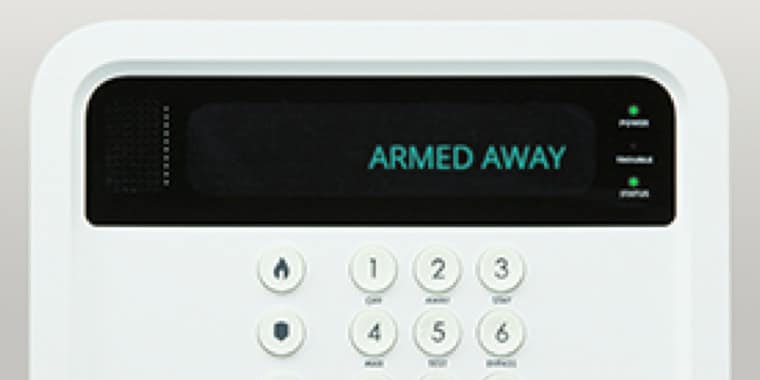Did you know carbon monoxide is one of the most common causes of poisoning every year? Installing a carbon monoxide detector is a simple way to help your home and loved ones stay safe. But, when your carbon monoxide detector is beeping, it can drive you crazy!
A carbon monoxide detector going off causes anxiety and annoyance. Why is it beeping? Is there a leak, or is it malfunctioning?
Keep reading to find out what to do if your carbon monoxide alarm goes off!
How Does a Carbon Monoxide Detector Work?
Carbon monoxide detectors are simple devices that more and more US states are making necessary in dwellings. Twenty-seven US states require detectors in homes and buildings. They commonly look exactly like a traditional smoke detector.
A microchip within the device sends signals when the gas gets detected. LED lights indicate when batteries require replacing. Sometimes, carbon monoxide detectors get wired straight into an electrical system.
When gas is detected, the signal sets off a shrill alarm.
Carbon Monoxide Detector Beeping
If your alarm gets triggered and the detector is beeping, it can feel worrisome. But, don't panic! The first thing to do is to make sure everyone is feeling okay that is present inside the house.
If anyone has flu-like symptoms, contact 911 and get outside for fresh air.
The types of sounds and beeps the detector makes are important. Alarms that are continuously going off with a high-pitched sound mean there is a carbon monoxide leak. Contact your emergency service provider immediately.
Some common types of chirps and beeps to understand:
30-Second Beeps from Carbon Monoxide Detector
Sometimes the carbon monoxide detector makes non-emergency alarm sounds. When the detector is making chirping sounds every 30 seconds, this is not the same as a continuous siren.
The chirping sound usually indicates the alarm is near its end of life and requires replacing. Carbon monoxide detectors have a seven-year lifespan. Replacing the battery does not stop this type of beeping.
Detectors that plug into a wall socket may have a loose battery when these types of beeps occur.
Random Beeps from Carbon Monoxide Detector
LED lights often indicate the battery level, so check if the battery requires replacing if the detector chirps. Low batteries send signals to chirp or beep once every minute. The presence of carbon monoxide causes many beeps every few seconds.
Regular Beeps from CO Alarm
If your detector makes three consecutive beeps around every five minutes, this indicates it is malfunctioning. Newer model detectors will prompt you by saying a recorded message or indicate through light colors. Look to replace your detector.
How to Stop a Carbon Monoxide Detector Going Off
If the alarm on your carbon monoxide detector is going off in a continuous, shrill way, get outside to fresh air right away. Make sure you contact your emergency provider to give you the all-clear before re-entering your dwelling.
But, if your carbon monoxide alarm is going off in one of the other ways it can beep, there are a few things to try.
Replace or Check the Battery
Usually, the annoying beeping caused by a carbon monoxide detector is to alert you about a malfunctioning battery. If the old battery requires changing or it's slipped out of place, the unit will chirp. Try reinstalling the battery or replacing it, and then reset your device.
Check the LED Lights
Most carbon monoxide alarms have LED lights that indicate their status. Some indicate 'error' messages or codes. Many require you to contact your manufacturer to learn what these codes mean.
Smart detectors tell you if they are malfunctioning and are linked to your smartphone through an app. These take the guesswork out of what is going on with your security devices.
If you've received an error code and there isn't a buildup of carbon monoxide inside your home, try cleaning out inside the detector. Dust buildup can block sensors and make the alarm go off.
Make sure you don't use water or cleaners to dust your detector. A dusting cloth or vacuum works well to remove sediment or particles that are interfering with the sensors.
Find False Alarms
If your detector gets placed near a fireplace or gas stove, it may trigger false alarms. A fuel-burning appliance throws off tiny, trace amounts of carbon monoxide. Having your detector too close may cause its sensors to alarm.
It is recommended that you place your detectors at least 15-feet away from these fuel-burning appliances or devices.
Reset your Carbon Monoxide Detector
Carbon monoxide detectors require a battery or wired power to reset them. Make sure a battery is connected, or the power is on before starting the reset process.
First, look for a button called 'silence' or 'reset'. Hold this button down for 10 or more seconds. Release the button, and the LED lights should blink or turn back on. Your unit might also let out a singular beep.
Smart detectors often have controls through their applicable apps. You can silence and reset your alarm through your phone.
Where to Install Your Carbon Monoxide Detectors
It is important to have more than one carbon monoxide detector. Just like a smoke alarm, these units save countless lives every year! Every floor of a building requires at least one carbon monoxide detector.
It is recommended to install these detectors on the wall, around five feet above ground level. Some alarms detect both smoke and carbon monoxide.
Placing them near bedrooms is important because carbon monoxide is tasteless, odorless, and colorless. When you're sleeping, you won't notice a leak. Detectors installed near bedrooms help to ensure nighttime safety.
Other places in the home that require these detectors are any space where fuel-powered appliances are used. This includes the garage where power tools and vehicles are stored.
Both UV lights and humidity affect the sensors of carbon monoxide detectors. Avoid placing them directly near a sunny window or in a bathroom.
What is Carbon Monoxide?
Carbon monoxide is often called the silent killer. This is because the gas has no odor and no color. It gives no indication it is in the air, so carbon monoxide detectors are very useful in helping prevent poisoning.
It is present in the environment when carbon fuels are not completely combusted. Fuel-powered appliances have the potential to release this gas into your environment. Some common sources of carbon monoxide in the home are:
- Natural gas-powered appliances, such as washers and dryers
- Water heaters
- Gas and wood fireplaces, wood/pellet stoves
- Boilers
- Gas ovens and stovetops
- BBQs, grills
- Lanterns
- Cars, trucks, motorcycles, recreational vehicles
- Power tools, such as lawnmowers or chainsaws
Cigarettes are also a major cause of carbon monoxide. Proper ventilation is necessary to avoid carbon monoxide buildup and poisoning in enclosed spaces.
Never use a portable propane or gas stove inside the home, and be sure to have your chimney cleaned annually. Gas-powered generators should never get used inside to prevent carbon monoxide poisoning.
What Carbon Monoxide Does in the Body
When you breathe in carbon monoxide from your environment, it enters your lungs. Then, carbon monoxide combines with your red blood cells and enters your bloodstream. This blocks oxygen from red blood cells and begins to poison the body.
Carbon monoxide binds to red blood cells much faster than oxygen and takes a long time to leave the body. This depletes your system from vital oxygen. Low oxygen levels can damage the brain and other essential organs.
Symptoms of Carbon Monoxide Poisoning
Both infants and the elderly are most at risk of carbon monoxide poisoning. During winter is when the highest risk occurs due to poorly ventilated or maintained heating sources.
Symptoms of exposure seem like the flu. These symptoms look like this:
- headaches
- feeling nausea, dizziness, fainting
- hard to breathe
- chest pain
- confusion
- vomiting
- loss of body control
Get an Expert to Install Carbon Monoxide Detectors
The safety experts at ADT are highly trained at helping to ensure your home and family are protected from hazards. A carbon monoxide detector going off is a stressful event. Professional installation and 24/7 monitoring help take the worry off your shoulders.
The security packages from ADT provide guidance for what to do if your carbon monoxide alarm goes off. With an ADT installation, you get instant alerts to your smart device if your carbon monoxide detector is beeping.
With packages to suit every home's need, there's no time to wait. Contact your ADT specialist today for your free consultation.





